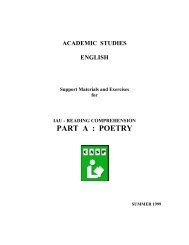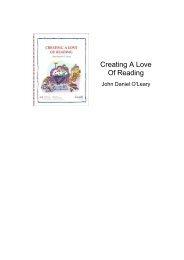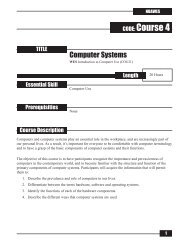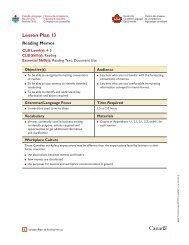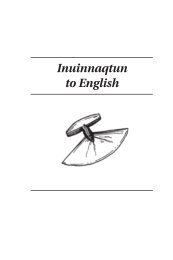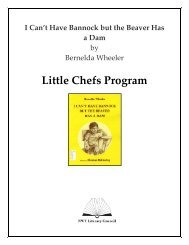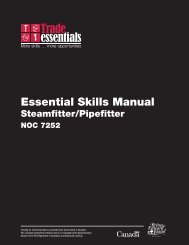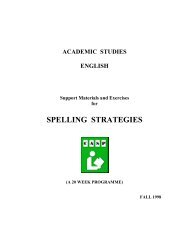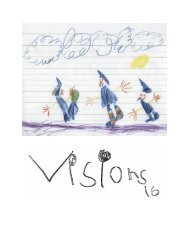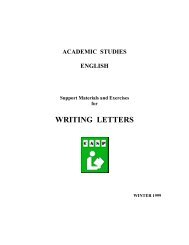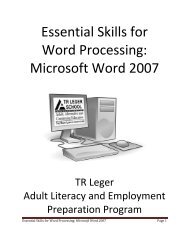Integrating Essential Skills into Training - National Adult Literacy ...
Integrating Essential Skills into Training - National Adult Literacy ...
Integrating Essential Skills into Training - National Adult Literacy ...
Create successful ePaper yourself
Turn your PDF publications into a flip-book with our unique Google optimized e-Paper software.
◊ take precise measurements using specialized equipment (e.g.) a tape measure, a scale<br />
◊ make indirect measurements using geometry and trigonometry<br />
◊ measure curved or irregular surfaces<br />
◊ measure an angle<br />
◊ calculate amounts required (e.g.) the number of tiles required for a floor<br />
◊ calculate areas, perimeters, volumes<br />
◊ calculate total load weights<br />
◊ calculate a percentage<br />
◊ calculate a trajectory<br />
◊ calculate ratio, average, rate, proportion<br />
◊ use scientific notation, powers, roots<br />
◊ use formulae, equations, algebraic problems<br />
• data analysis math (analysis of numerical data)<br />
◊ analysis of statistics<br />
◊ determining what is higher, lower or bigger, smaller<br />
◊ compare a numerical read-out to a range of numbers considered acceptable<br />
◊ compare rates, averages, etc.<br />
◊ calculate average rates of return on investments<br />
◊ compare monthly sales volumes<br />
◊ make projections<br />
◊ calculate impacts of different variables on pay and benefits packages<br />
• numerical estimation (tasks that involve any estimation that results in a number)<br />
◊ estimate amount of material to be used<br />
◊ estimate time a task will take<br />
◊ estimate costs<br />
◊ estimate load weights<br />
◊ estimate numbers of workers required<br />
◊ estimate time available<br />
◊ estimate amounts that can be produced from raw materials<br />
◊ estimate number that will be sold<br />
Some considerations:<br />
◊ the need to use specific math foundations (math skills, concepts or knowledge areas):<br />
• number concepts: whole numbers, integers, fractions, decimals, percentages,<br />
powers/roots, scientific notation, significant digits. (Workers read, write, count,<br />
round-off, add, subtract, multiply and divide numbers.)<br />
• number patterns and relations: formulae, equations, rates, ratios, proportion<br />
• shape and special sense: areas, perimeters and volumes, measurement<br />
conversions, geometry and trigonometry (using sine, cosine, tangent, cotangent,<br />
secant and cosecant ratios to solve the unknown side of an angle or triangle)<br />
• statistics and probability: calculating averages, analysing data, using<br />
mathematical theories of probability



